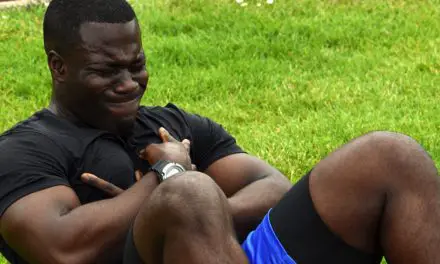Biological variability makes each person’s body unique. Thus, analyzing posture does not tell much about why someone has pain.
Earlier this year, a German study found that “back pain patients and athletes did not show a different behavior to asymptomatic non-athletes.” (1) In other words, if you were to examine hundreds of people in a day by looking at their standing posture, you would not be able to accurately identify who has low back pain and who does not. This is because of the many variations that humans have, from standing posture to anatomical structures.
Professor Hendrik Schmidt and his colleagues from Universitätsmedizin in Berlin made four hypotheses:
1. “The variability in lumbar lordosis and sacrum orientation in repetitive upright standing postures decreases with the number of standing phases.” The idea is that test subjects will become familiar with the test setup and should know how to pose for the tests, which would decrease variability.
2. “Age and gender significantly affect the variation in lumbar lordosis and sacrum orientation.” This is based on two previous studies that found a correlation between gender and age with lumbar lordosis and sacrum orientation. (2,3)
3. “[Low back pain] patients show a significantly greater variability in lumbar lordosis and sacrum orientation than asymptomatic subjects due to pain-related functional adaptation and/ or pain and movement avoidance behaviour.”
4. “Athletes with a higher and more uniform fitness level stand more reproducible than non-athletes.” The researchers assumed that athletes have better neuromuscular and motor control that allow them to have more stability and reproducible posture than non-athletes, especially those with low back pain.
The researchers recruited 332 subjects (187 women; 145 men) who are non-athletes with no back pain for at least six months and had no spinal or hip surgery. These people were also part of a cohort study that involved measurement of the lumbar spine posture and its movement. (4) They also recruited 21 soccer players without back pain and 83 patients with chronic low back pain for more than a year. Sensors were placed along the thoracic and lumbar spine and the sacrum, which were sensitive to the changing curvature of the spine.
Then each subject performed four exercises that resemble old-school Jack LaLanne workouts in a standing position: forward flexion, back extension, left and right lateral bend, and left and right horizontal rotation. Each exercise was performed three times before moving on to the next exercise, and they were told to stand still in a “comfortable position” before each rep to allow the sensors to measure the joints.
The results do not find significant differences between the back-pain free group and those with low back pain. Not only were the joint angles similar between the asymptomatic and back pain group and between the non-athlete and athletic group, each time the subject performed an exercise and return to being a statue for two seconds, no two standing postures were alike.
“In six repeated standing phases, 51% of all asymptomatic women and men showed on average variations in lumbar lordosis between 10% and 20%; 20% between 20% and 30% and 6% between 30% and 40%. In the sacrum orientation, 42% of all asymptomatic women and 29% of all asymptomatic men revealed variations of 10%-20%. Interestingly, 18% of all asymptomatic men showed variations in sacrum orientation >40%. For variations of 10–20%, sacrum orientation and lumbar lordosis did not show significant differences between repeated measurements,” the researchers wrote.
The study contradicts the researchers’ hypotheses. There was hardly any difference between those with back pain and those who do not, age and gender did not affect the variations in the standing posture, low back pain patients did not have greater variability than those with no pain, and trained athletes had just as much variation as non-athletes.
“Therefore, it is important to understand that the variability in standing is not predictable but random, and thus does not reflect an individual specific behavioral pattern which can be reduced, for example, by repeated standing phases,” the researchers advised.
Related: Sacroiliac Joint Pain, an Updated Narrative
Related: Why Massage Therapists Should Understand How Pain Works
References
1. Schmidt H, Bashkuev M, Weerts J, Graichen F, Altenscheidt J, Maier C, Reitmaier S. How do we stand? Variations during repeated standing phases of asymptomatic subjects and low back pain patients. J Biomech. 2018 Mar 21;70:67-76. doi: 10.1016/j.jbiomech.2017.06.016.
2. Pries, E., Dreischarf, M., Bashkuev, M., Schmidt, H., 2015b. Application of a novel spinal posture and motion measurement system in active and static sitting. Ergonomics, 1-6.
3. Dreischarf M, Albiol L, Rohlmann A, et al. Age-Related Loss of Lumbar Spinal Lordosis and Mobility – A Study of 323 Asymptomatic Volunteers. Shi X-M, ed. PLoS ONE. 2014;9(12):e116186. doi:10.1371/journal.pone.0116186.
4. Consmüller T, Rohlmann A, Weinland D, Druschel C, Duda GN, Taylor WR. Velocity of Lordosis Angle during Spinal Flexion and Extension. Milanese S, ed. PLoS ONE. 2012;7(11):e50135. doi:10.1371/journal.pone.0050135.
Nick Ng is the editor of Massage & Fitness Magazine and the managing editor for My Neighborhood News Network.
An alumni from San Diego State University with a bachelor’s in graphic communications, Nick also completed his massage therapy training at International Professional School of Bodywork in San Diego in 2014. In 2021, he earned an associate degree in journalism at Palomar College.
When he gets a chance, he enjoys weightlifting at the gym, salsa dancing, and exploring new areas in the Puget Sound area in Washington state.





